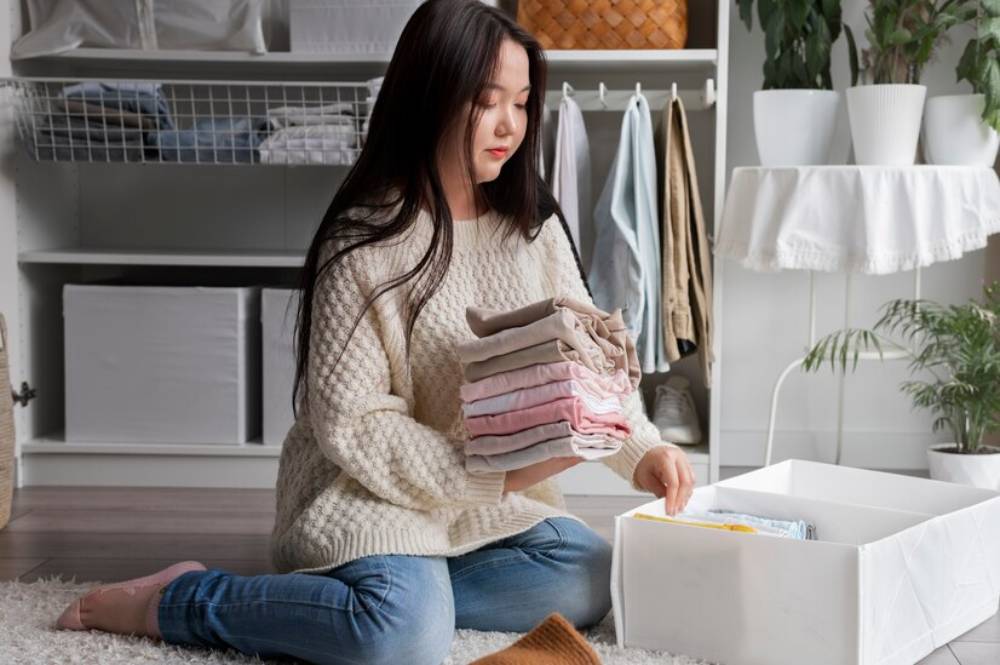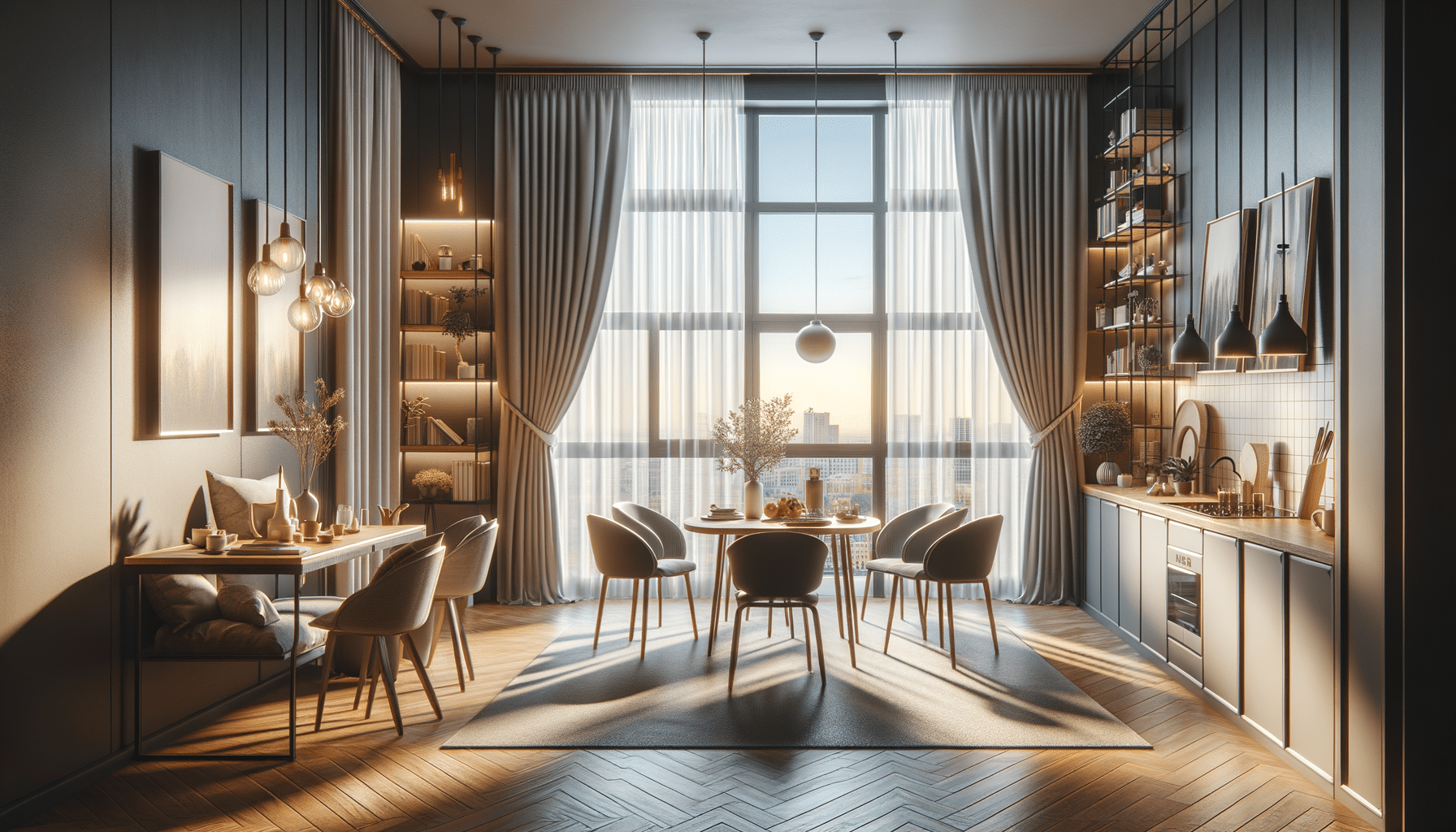
Decluttering Mistakes to Avoid for a Minimalist Home
With the rise of minimalism, there’s an increasing appetite to pare down, let go, and build quieter, more deliberate spaces. But the practical act of decluttering is not often as simple as the concept sounds. Most of us go into it with the best intentions — bin bags at the ready, prepared to rid ourselves of decades’ worth of buildup — only to get stuck, stressed, or worse, in a bigger mess than we started with.
Mistakes when decluttering are surprisingly common. Whether it’s keeping “just in case” items or moving too quickly and wishing you hadn’t, these mistakes can undermine your minimalist design goals. The idea isn’t to simply throw everything away but to curate a space that expresses your lifestyle, values, and aesthetics. When done well, minimalism will change your home and your headspace.
In this post, we’ll dissect the most common decluttering mistakes people make, provide practical home tips, and offer expert-backed solutions so you can create a serene, clutter-free environment without all the craziness.
1. Decluttering Without a Clear Purpose or Vision

Why It Matters
One of the biggest mistakes is jumping in without understanding why you’re doing it. Decluttering without intention often leads to inconsistent results or emotional burnout.
Ask yourself:
- What do I want my home to feel like?
- What’s the goal—more space, less stress, or a better aesthetic?
- Which minimalist style am I aiming for—Scandi, Japanese, or modern?
Expert Insight
According to Marie Kondo, every item should “spark joy.” However, in minimalist organisation, you also need to ask if it serves a functional or aesthetic purpose. Having a clear intention helps you make thoughtful decisions and prevents decluttering regret.
2. Decluttering Everything at Once
The Pitfall of “All-or-Nothing”
It’s tempting to take a weekend and try to clear out the entire house. However, this approach often leads to decision fatigue and incomplete projects.
Instead, try:
- Breaking down the process by room or category
- Using the 20/20 rule: if you can replace it for under £20 in under 20 minutes, let it go
- Applying the 15-minute daily declutter to keep things manageable
Real-Life Example
One family in Manchester attempted a full-home declutter in 48 hours, only to live out of boxes for weeks. They later adopted a “one drawer a day” policy and found more lasting success.
3. Getting Rid of Too Much, Too Quickly
The Minimalism Backlash
Conversely, some people get overzealous and remove essential or sentimental items. This can lead to regret, discomfort, and, in some cases, having to rebuy items later.
Key questions to ask:
- Have I used this in the past year?
- Would I notice or miss it if it were gone?
- Is it replaceable if needed?
Home Tip
Create a “maybe” box. Place uncertain items in it and store it out of sight. If you haven’t reached for anything in 3–6 months, it’s probably safe to let them go.

4. Confusing Organising with Decluttering
Tidy ≠ Minimal
You can put all your belongings in neat containers and still be overwhelmed. The proper minimalist organisation starts with reducing, not rearranging.
Decluttering = removing. Organising = arranging.
Don’t buy expensive storage solutions before you’ve pared things down. You’ll often find you need far fewer than you think.
Pro Tip
Declutter first, then measure precisely what you need before investing in bins, baskets, or shelving. Avoid the “storage trap,” which hides clutter instead of eliminating it.
5. Ignoring Emotional Attachments
The Sentimental Snag
We all have items that carry emotional weight—gifts, souvenirs, family heirlooms. Ignoring these feelings or trying to rush past them can derail your progress.
Instead:
- Honour the memory before letting go (take a photo, write a note)
- Keep one item to represent a group (e.g., one card from a collection)
- Create a designated “memory box” to limit volume
Psychological Insight
Letting go is often tied to identity, memory, and fear of loss. Working through these emotions mindfully leads to longer-lasting results.
6. Keeping “Just in Case” Items
The Scarcity Mindset
A huge source of clutter is the fear of needing something later. But most “just in case” items never actually get used.
Common culprits include:
- Old electronics and cords
- Expired beauty products
- Duplicate kitchen tools
- Clothes that don’t fit “but might again someday.”
Solution
Apply a usage test: If you haven’t used it in a year, let it go. And remember, things are replaceable—your peace of mind isn’t.
7. Not Considering Function Over Form
Looks Good, But Is It Useful?
Many minimalists fall into the trap of choosing items solely for aesthetics. But minimalism is about intentional living, not just white walls and wood tones.
Balance is key. Choose items that are both beautiful and practical.
Example:
- A stunning woven basket can be both decorative and hold blankets.
- A sleek bench with hidden storage supports form and function.
8. Failing to Maintain the System
Decluttering Is Not One-and-Done
You’ve finally decluttered—fantastic. But without a maintenance plan, clutter creeps back in. The minimalist organisation requires regular attention.
Maintenance strategies:
- One-in, one-out rule
- Monthly mini-declutters
- Seasonal audits (spring cleaning, post-holiday purge)
Quick Fix
Set a calendar reminder to review your wardrobe, kitchen, or workspace every three months. Consistency is what keeps your minimalist space thriving.
9. Decluttering Alone Without Input
Shared Spaces, Shared Decisions
If you live with others, decluttering without involving them can cause friction—your version of clutter may be someone else’s treasure.
Communicate clearly. Set shared goals and agree on boundaries.
Example: Create individual zones—your side of the closet, their shelf in the bathroom—and let each person manage their own space.
10. Forgetting to Celebrate Progress
Minimalism Is a Journey
It’s easy to get caught up in what’s left to do. But every drawer cleared, every bag donated, is a win.
Track your progress:
- Take before-and-after photos
- Reward yourself with a clutter-free picnic or spa night
- Reflect on how each change has improved your home or mood
FAQs: Common Decluttering Concerns
Q1: How do I know if I’ve decluttered enough?
You’ve likely reached your ideal level when your home feels calm, functions efficiently, and enjoys being in it. Minimalism looks different for everyone.
Q2: Is it okay to keep sentimental items?
Absolutely. Minimalism isn’t about eliminating joy—it’s about curating your environment with purpose. Keep what truly matters, and display it intentionally.
Q3: What should I do with the items I declutter?
Donate, recycle, sell, or gift—whatever gives the item a second life. Avoid throwing everything away; sustainability is part of mindful living.
Curate, Don’t Just Clear
Decluttering is not stripping your home bare or following rules, per se. It’s about sculpting your space to represent who you are now, not who you were a decade ago or who you may become someday.
If you can avoid these common decluttering traps over the coming weeks — rushing the process, neglecting the emotions involved or mistaking tidy for minimalist — you’ll end up with a home that feels open, peaceful and profoundly personal. Minimalist organisation isn’t less for less’ sake; it is less of what doesn’t matter so you can make space for what does.
So, whether you’re approaching it for the first time or revisiting your minimalist goals, breathe in deeply, grab that donation bag, and work with purpose.
Ready to transform your home? Start small, be consistent, and release what no longer serves you. Your spartan sanctuary is waiting.


